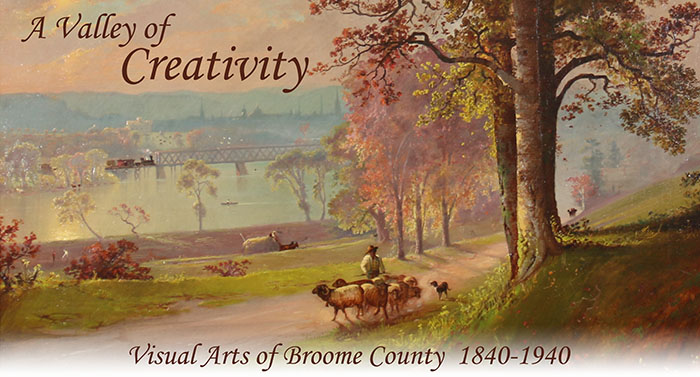In the early-mid 19th century, Broome County began to change from a settlement of farmers and artisans. The population grew, the railroad came, the canal came, and factory chimneys punctuated the skyline. By the time of the Civil War, a thriving Binghamton was born with eclectic-styled mansions lining the shady avenues. Owners of Front Street's grand houses had parlor walls decorated with much more art than their grandmothers had. Large portraits in baroque-fashioned gilt frames shared their space with landscapes and still life compositions. There were trained artists with studios on Court Street, and a rich cultural life enhanced the Parlor City.
The program follows the lives and works of several of our most interesting artists, including George Parks, Susan Waters, Henry Wolcott Boss, Fred Sidney Smith, Douglas Arthur Teed, Franck Taylor Bowers, and Catherine Ruch Bartoo. Over 50 illustrations define the exceptional richness of artistic achievement which made Broome County a center for visual arts in the Southern Tier.
Prior to coming to Binghamton in the 1970s, Richard Barons served as curator of the Genesee Country Museum near Rochester. He also was an adjunct professor in the Humanities Department at SUNY Broome for over ten years. In 2000 he accepted the position as Executive Director of the Southampton Historical Museum on Long Island, and in 2006 he became the Executive Director of the East Hampton Historical Society. Since 2013, he has been both Director of that historical society and of the Thomas Moran Trust.
He has authored several catalogs and books, including "The Folk Arts & Crafts of the Susquehanna Valley," "Franck Taylor Bowers," and "The Arts & Crafts Movement in New York State," among others. His latest is "A Postcard History of East Hampton," published last year.



